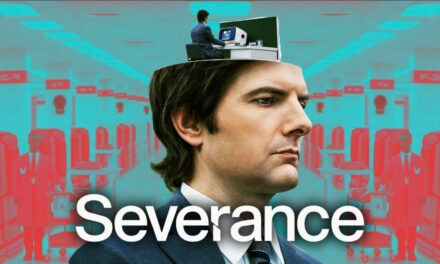CALL FOR PAPERS
The group Tecmerin (Universidad Carlos III de Madrid), within the Research Project “Cine y televisión en España 1986-1995: modernidad y emergencia de la cultura global” (CSO2016-78354-P), organizes the International Conference “Cinema, TV and Popular Culture in the 1990s: Spain-Latin America” on October 17th, 18th and 19th, 2018 (5th Tecmerin Academic Encounter).
The 1990s are the beginning of a new historical cycle in which the hegemonic growth of a series of neoliberal ideas takes place. Simultaneously, the symbolic disappearance of the Berlin frontier-wall occurs. In addition, it is a key period in the reconfiguration of culture in different areas. The audiovisual sector—both cinema and television—was no exception. One could even argue that contemporary Spanish and Latin American production stems, to a great extent, from the several industrial, cultural and aesthetic processes that crystallized during this period. Likewise, it is a crucial moment in the establishment of a series of connections between Spain and Latin America in terms of audiovisual production. There is an attempt to re-evaluate the role of a series of cultural agents, tracing, potentially, new platforms of exchange.
From a cultural and social viewpoint, the 500th anniversary of the encounter between Europe and America channels Spain’s greatest effort to work collectively in a variety of identity policies. After the consolidation of democracy, several international institutions legitimize the achievements of the Spanish Transition model and foster the celebration of top-notch cultural and sports macro-events, grouped around the commemorative 1992 date (the Barcelona Olympics, Seville’s Universal Expo, Madrid as European Cultural Capital). During those days, a series of important meetings and political agreements take place in Spain as well, such as the 1991 Peace Conference, or the creation of new tools to strengthen the Ibero-American community with a variety of cultural exchange and cooperation initiatives (the second Ibero-American Summit of “Chiefs of State and Government”, in 1992, takes place in Madrid). Nonetheless, these inclusion policies suffer from notable limitations, in the sense that they avoid establishing productive exchanges with discrepant sectors and opinions within the cultural, social and political fields.
During this period, Spain’s incorporation to the European Union (the ECC) turns into an immediate economic boost and the implementation of a series of liberalization policies. These international processes had unprecedented effects in a country, Spain, which was attempting to establish itself as the bridge between Europe and Latin America. Part of this accrued capital gets to local, regional and national governments, which, driven by their access to the riches of economic globalization, use this money (following a European pattern) in the creation of a series of cultural infrastructures and the financing of projects for new cultural consumers, a phenomenon that French author Marc Fumaroli has called the emergence of a “cultural State”. This well-known process—widely recognized today—started in Spain around the symbolic 1992 date. In Latin America, newborn democracies start also de-regulating and privatizing policies that will have a great impact in the development of the audiovisual sector.
From the on, cultural production would combine the modern logic of a personal style with production models that belong to an increasingly complex and multimedia industrial sector, bound by transnational synergies. There are, therefore, major changes in terms of production and consumption practices. In Spain, in the years prior to 1992, there are a series of mutations that point to the fact that the country is leaving behind certain artistic canons and modes of cultural production, entering thus a new phase. In cinema, there are several legislative modifications that attempt to supersede the limitations of the so-called Miró law, which championed projects according to a series of “quality” criteria, disregarding box-office results; in literature, as it happens with the cinema, a new generation of authors, where women figure prominently, come to the fore, and become central referents within the public sphere; in television, the arrival of private channels in 1990 drastically alters the audiovisual panorama; in music, the emerging bands of the 1980s have become mainstream and a new wave of creators, mobilizing other artistic practices such as comic books and B cinema, challenge the statu quo with conceptual works close to a DIY (‘do it yourself’) ethos, molding a new scene typically labeled as ‘indie’; in the visual arts, new contemporary museums and international fairs such as ARCO are born; in addition, there are dozens of exhibitions that encourage the Spanish population to catch up with international artistic trends, creating a transnational logic of circulation and exhibition linked to other European cultural events and the wider international panorama. Similarly, transformations can also be detected within Latin America during this decade, which will, for example, catapult in the last stages of the 1990s the emergence of renowned filmmakers such as Walter Salles, Alfonso Cuarón, Guillermo del Toro, Lucrecia Martel, Pablo Trapero, Carla Camurati or Juan José Campanella, among others.
We consider, therefore, necessary to approach this period from an analytical viewpoint, putting special emphasis in the Spanish cultural production, and the multiple cultural connections between Spain and Latin America.
We are especially interested in the following areas of analysis, although we invite scholars to propose other fields of study:
- Transformations in the 1990s film panorama
- The rebirth of national television fiction
- Film and television co-productions between Spain and Latin America
- Legislative changes within the 1990s Spanish and Latin American audiovisual sector
- New music approaches during the 1990s: the “indie” generation
- The festivalization of Spanish culture: from the FIB to the Sónar or Primavera Sound
- The EU and 1990s cultural production
- Globalization, identity and the celebration of macro-events
- The arrival of private and pay television in Spain and its effects on the audiovisual panorama
- Regional television models
- New Reality TV formats
- “Star System” and representations of the “Hispanic”
- Critical approaches from the margins in relation to the 1990s in Spain and/or Latin America
- Contemporary approaches to the 1990s in film and television
- La Ruta del Bakalao: History and Evolution
Key Note Speakers:
Robert Stam, New York University
Sabine Schlickers, Universität Bremen
Duncan Wheeler, University of Leeds
Proposals:
The official languages of the conference are both English and Spanish. Scholars and researchers may submit two types of proposals:
Individual: Send a paper title, 300-word abstract and a 100-word bio.
Pre-constituted panels (3 or 4 speakers): Send a panel title, 300-word abstracts and 100-word bios for each paper and author.
Proposals Deadline: June 15th 2018.
Price:
The cost of the conference is 75 euros for researchers and university professors and 30 euros for postgraduate students.
Payment may be done once a proposal has been accepted until the first day of the conference through an online registration platform that will be available after the proposals evaluation period.
Proyecto I+D+i “Cine y televisión en España 1986-1995: modernidad y emergencia de la cultura global” (CSO2016-78354-P), Ministerio de Economía, Industria y Competitividad. Gobierno de España)





